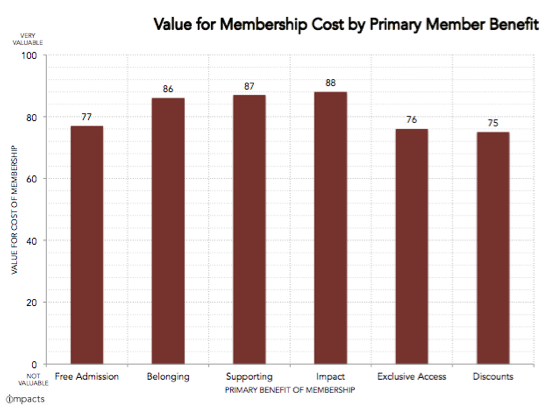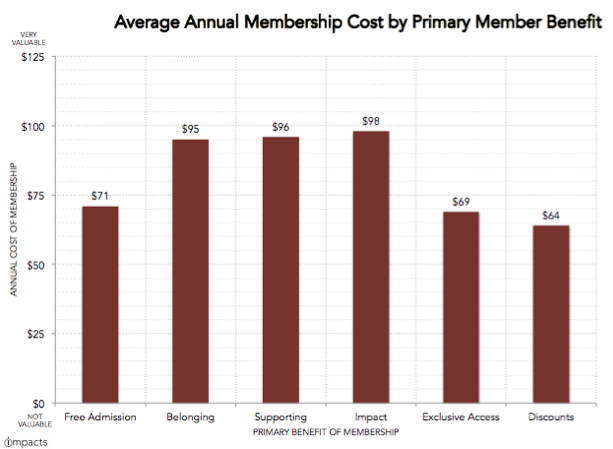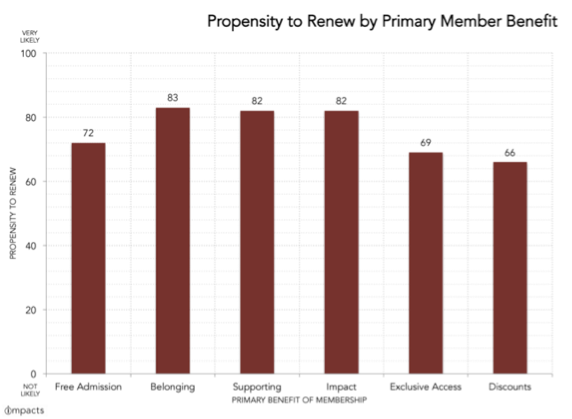
Data suggest that members to cultural organizations often fall into one of two categories – and the categories tell a lot about how to engage these members.
I originally debuted this important data during my keynote at the Pennsylvania Museums Conference this spring. Today, I’m excited to share this information in this week’s Know Your Own Bone Fast Facts video. This data may help directly pave the way for the future of membership for cultural organizations. As usual, when I refer to cultural organizations, I am talking about museums, aquariums, botanic gardens, zoos, performing arts organizations, and other mission-driven organizations that welcome visitors.
At cultural organizations, we tend to lump members together as one audience, but data suggest that most folks are driven to become members based upon one of two very different motivating factors. Understanding these motivating factors may allow us to develop more effective membership programs. This data illustrates that what we consider “membership” may actually be two related – but different – programs.
IMPACTS surveyed members of 118 cultural organizations that charge admission. These organizations range from museums to zoos to orchestras. For the study, we collected open-ended responses regarding the primary benefit of membership. We found that people who purchase memberships to cultural organizations do so for six primary benefits: Free admission; belonging to the organization; supporting the organization; contributing to mission impact; exclusive access to events, and member discounts.
Conceptually, these six benefits fall into two groups: transaction-based members and mission-based members. Transaction-based members are those whose answers may not surprise leaders at all, because their reported primary benefits align with the benefits that most organizations market for membership. Transaction-based members value free admission, exclusive access to events, and member discounts. No surprises there for membership teams, most likely. In fact, you may even be thinking, “Thank goodness that those member discounts are being valued!” Indeed, for some folks, they are valued.
Mission-based members (as we will call them) are driven to become members for reasons more directly related to an organization’s mission. Mission-based members value belonging to the organization, supporting the organization, and contributing to mission impact. These folks value the meaning of membership more than the transaction-based benefits.
We found it interesting that the top six benefits reported by members could be divided in this way and we wanted to dig deeper. Does a member’s primary benefit affect how they perceive and value their membership? As it turns out, it definitely does. We organized responses based upon what members identified as their primary member benefit, and we immediately spotted some noteworthy differences.
1) Mission motivated members find greater value in their memberships
People whose primary motivation was to support the organization, belong to the organization, and contribute to mission impact found their membership to be 14.5% more valuable than people who joined primarily for free admission, discounts, or event access.

2) Mission motivated members pay more for memberships
Does that mean that these folks might be more likely to buy higher-level memberships? Yes! As it turns out, mission motivated members in the survey were paying 42% more for memberships than transaction motivated members – and, as a reminder, they are still finding their membership to have 14.5% higher value for cost.

3) Mission motivated members are more likely to renew their memberships
Members that are primarily mission motivated are also more likely to renew their memberships. In fact, mission motivated members are 14% more likely to annually renew their membership than those whose primary benefit is free admission.

This data suggest that what we call “membership” to cultural organizations may actually be two different products: membership and an annual pass benefit. It is certainly a balancing act, as mission motivated members are primarily motivated by mission-based factors, but transaction-based benefits may not hurt the deal. Perhaps it is us within the industry who blur the line and discourage mission-based members from being fully cultivated.
Consider this: many cultural organizations tend to believe that free admission is the most important benefit of membership. Indeed, it is a significant motivator for many members, but it is also the benefit that cultural organizations highlight and market the most – sometimes at the expense of mission-related benefits. When we make our memberships primarily about transactions, we neglect the motivations of our most meaningful members. Go pull up nearly any membership page to a cultural organization right now and I will bet that the primary selling point that you see is free admission, and the concept of supporting mission impact is presented as a “feel good” that is secondary to “the deal.” Again, this is not to say that free admission isn’t important to members and an appropriate benefit for member categories, but if you were a truly mission motivated potential member looking for your ideal way to support the organization, you may find that the method of support that you want does not exist. Or rather, it may exist, but you may not feel that optimal passion match because your own motivations are secondary to transaction-based benefits.
Members whose primary motivation is mission-related find greater value in their memberships, are willing to pay more for memberships, and they are most likely to renew their memberships. These are our people and prioritizing them is a smart move. Let’s use this information to create more effective membership programs that optimize support for our organizations and support long-term solvency.







